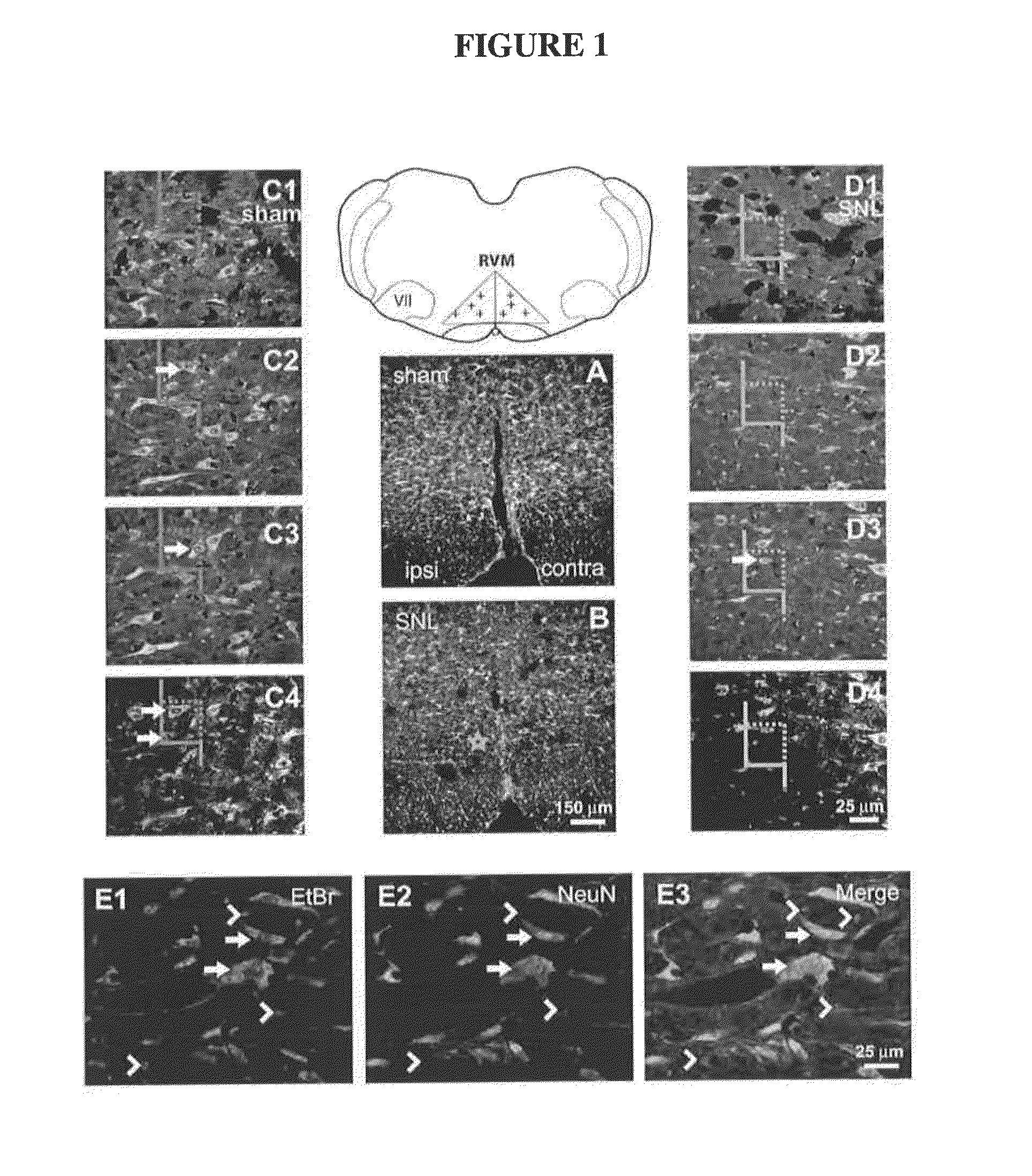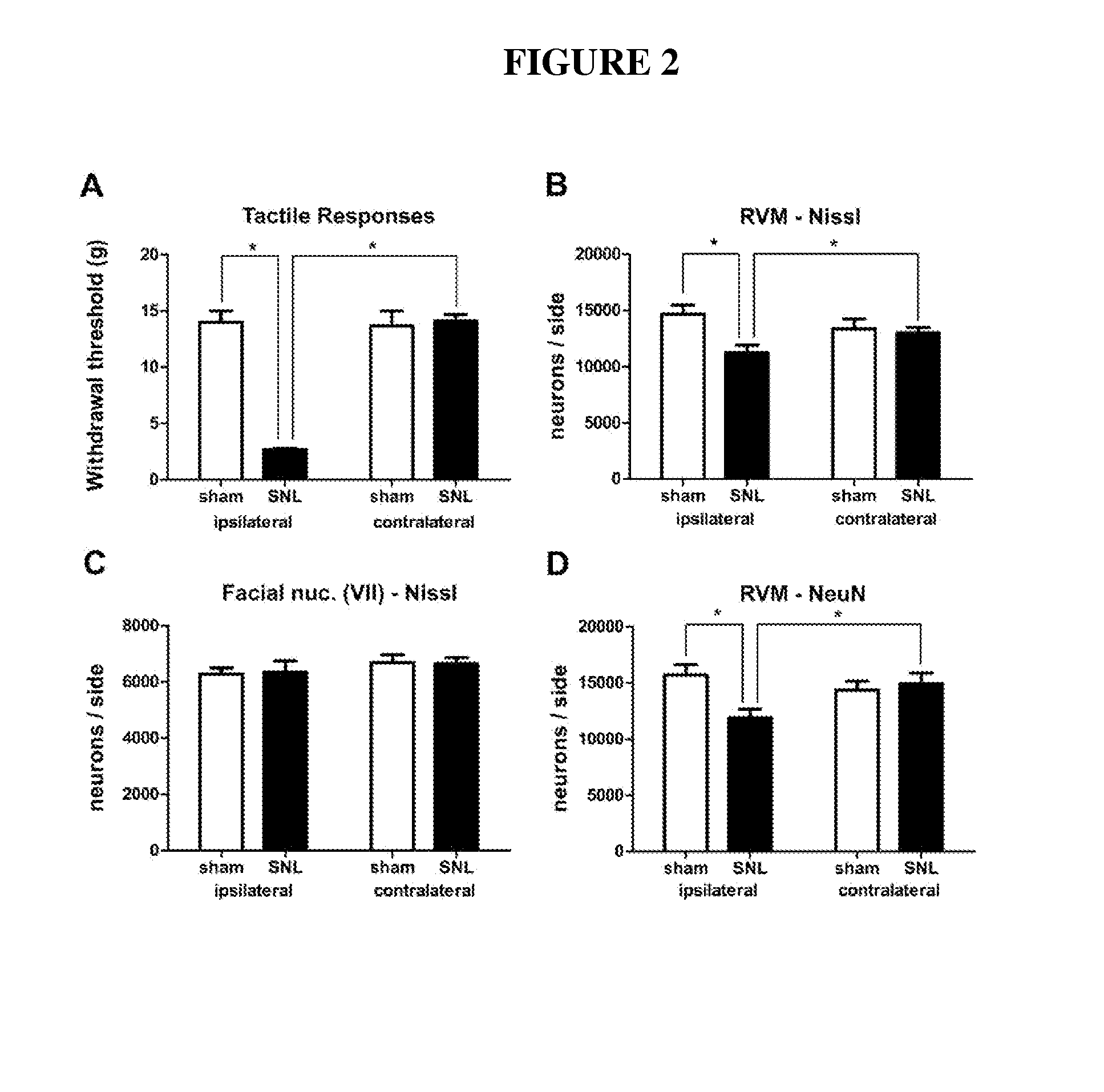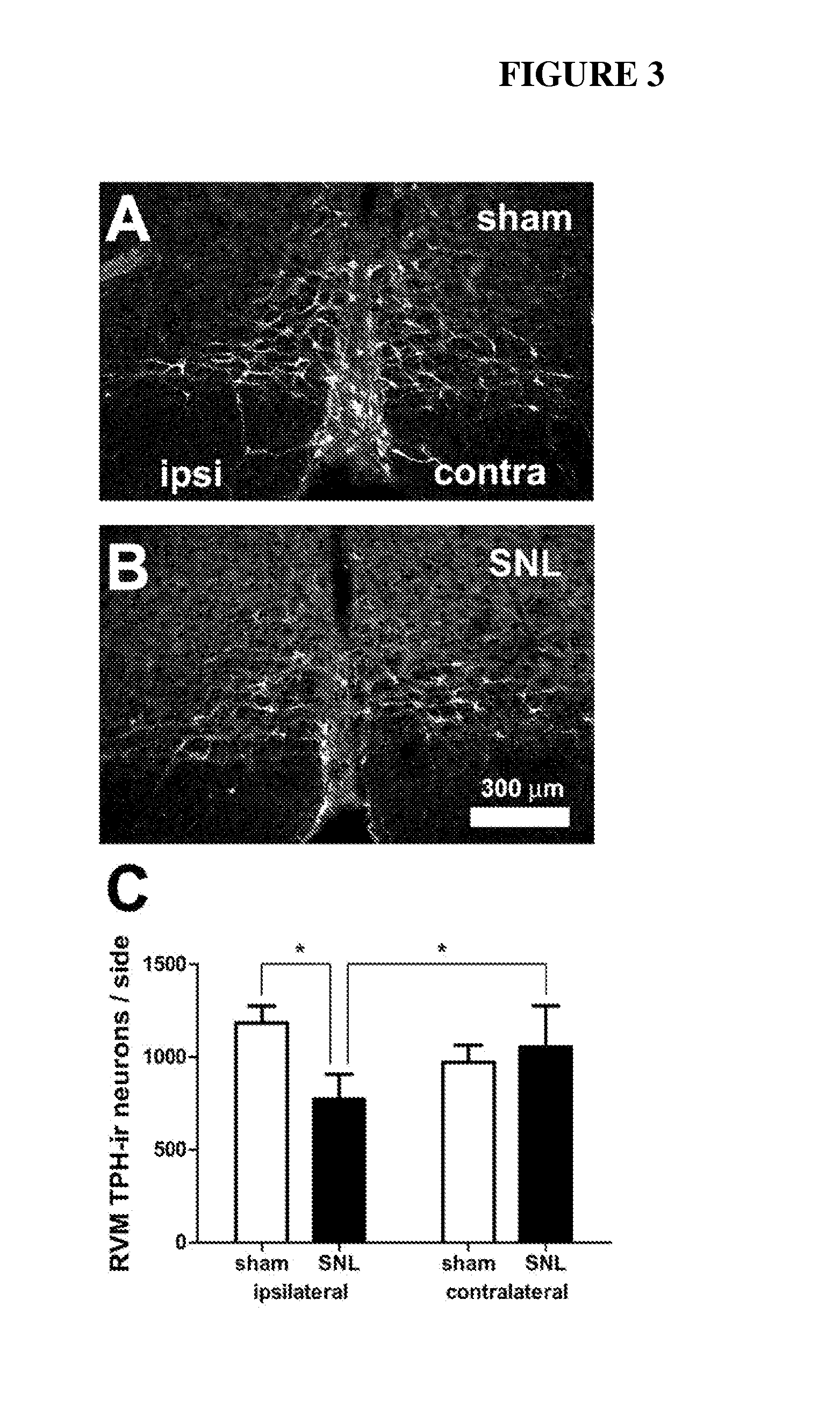Prevention or attenuation of neuropathic pain and kidney injury by tauroursodeoxycholic acid
a technology of tauroursodeoxycholic acid and neuropathic pain, applied in the field of neuropathy, can solve the problems of inability to reverse the snl-induced mechanical hypersensitivity, inability to tolerate, and inability to achieve the effect of reducing both neural loss and the increase of glia, and reducing the descending inhibition of nociception
- Summary
- Abstract
- Description
- Claims
- Application Information
AI Technical Summary
Benefits of technology
Problems solved by technology
Method used
Image
Examples
Embodiment Construction
[0014]It has been shown that nerve injury and disease can trigger a range of responses in both the peripheral and central nervous systems that contribute to chronic neuropathic pain. In the periphery, injured primary sensory neurons develop hyperexcitability and abnormal impulse generation. Other pathophysiological changes observed in injured primary sensory neurons include the altered regulation and expression of certain molecules (e.g. neuropeptides, ion channels, enzymes, etc.). Increased spinal cord excitability ipsilateral to the injury (i.e. central sensitization) also appears to contribute crucially to abnormal pain conditions after tissue injury. N-methyl-D-aspartate (NMDA) receptor activation is one of the principal mechanisms in central sensitization, and its role in neuropathic pain is implied by preclinical studies showing that NMDA 20 receptor antagonists are effective in alleviating experimental neuropathic pain. Pathophysiological changes in the RVM also contribute to...
PUM
| Property | Measurement | Unit |
|---|---|---|
| pH | aaaaa | aaaaa |
| pH | aaaaa | aaaaa |
| thickness | aaaaa | aaaaa |
Abstract
Description
Claims
Application Information
 Login to View More
Login to View More - R&D
- Intellectual Property
- Life Sciences
- Materials
- Tech Scout
- Unparalleled Data Quality
- Higher Quality Content
- 60% Fewer Hallucinations
Browse by: Latest US Patents, China's latest patents, Technical Efficacy Thesaurus, Application Domain, Technology Topic, Popular Technical Reports.
© 2025 PatSnap. All rights reserved.Legal|Privacy policy|Modern Slavery Act Transparency Statement|Sitemap|About US| Contact US: help@patsnap.com



